-
 Bitcoin
Bitcoin $118400
0.47% -
 Ethereum
Ethereum $3836
2.20% -
 XRP
XRP $3.157
2.98% -
 Tether USDt
Tether USDt $0.9999
-0.03% -
 BNB
BNB $801.5
1.31% -
 Solana
Solana $180.9
2.07% -
 USDC
USDC $0.9999
-0.02% -
 Dogecoin
Dogecoin $0.2225
2.50% -
 TRON
TRON $0.3285
-1.02% -
 Cardano
Cardano $0.7789
2.60% -
 Hyperliquid
Hyperliquid $43.60
2.39% -
 Sui
Sui $3.892
4.41% -
 Stellar
Stellar $0.4229
3.34% -
 Chainlink
Chainlink $18.01
3.98% -
 Hedera
Hedera $0.2745
6.77% -
 Bitcoin Cash
Bitcoin Cash $582.3
3.38% -
 Avalanche
Avalanche $23.77
1.04% -
 Ethena USDe
Ethena USDe $1.001
0.01% -
 Toncoin
Toncoin $3.493
3.59% -
 Litecoin
Litecoin $110.0
2.48% -
 UNUS SED LEO
UNUS SED LEO $8.936
-0.37% -
 Shiba Inu
Shiba Inu $0.00001304
2.49% -
 Uniswap
Uniswap $9.999
1.09% -
 Polkadot
Polkadot $3.897
3.26% -
 Monero
Monero $308.6
-0.83% -
 Dai
Dai $0.9999
-0.01% -
 Bitget Token
Bitget Token $4.504
-0.04% -
 Pepe
Pepe $0.00001154
2.95% -
 Cronos
Cronos $0.1471
3.06% -
 Ethena
Ethena $0.6691
19.53%
How to confirm a Bollinger Band signal?
Bollinger Band signals gain strength when confirmed by volume, price action, and higher timeframe trends—never rely on the bands alone.
Jul 31, 2025 at 02:08 am
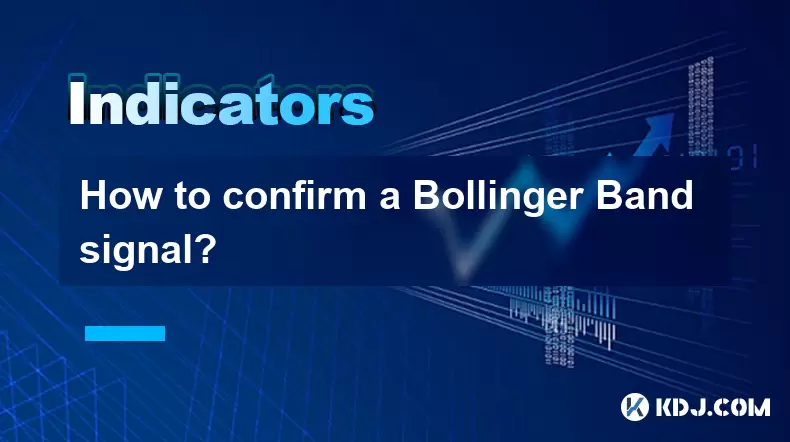
Understanding the Bollinger Band Structure
To confirm a Bollinger Band signal, it is essential to understand the components of the indicator. Bollinger Bands consist of three lines plotted on a price chart: a simple moving average (SMA), typically over 20 periods, and two standard deviation bands above and below the SMA. The upper band is calculated as the SMA plus two standard deviations, while the lower band is the SMA minus two standard deviations. The width of the bands adjusts dynamically based on market volatility—narrowing during low volatility and expanding during high volatility. Recognizing these structural elements is the foundation for interpreting signals correctly.
Identifying Common Bollinger Band Patterns
Several patterns are commonly associated with Bollinger Bands, each requiring specific confirmation steps. The most widely recognized are the Bollinger Squeeze and price touching or crossing the bands. A squeeze occurs when the bands contract significantly, indicating low volatility and often preceding a sharp price movement. However, a squeeze alone is not a confirmed signal—it only suggests potential. A price touching the upper band may indicate overbought conditions, while touching the lower band may suggest oversold conditions. These touches must be validated with additional context to avoid false signals.
Using Volume to Confirm Band Touches
One effective method to confirm a Bollinger Band signal is by analyzing trading volume at the point of band interaction. When price reaches the upper or lower band, examine the accompanying volume. A significant increase in volume during a band touch strengthens the signal’s validity. For instance, if price hits the lower band with high volume, it may confirm strong selling pressure and a potential reversal. Conversely, if the touch occurs with low volume, the signal may lack conviction and could be ignored. Volume acts as a filter to distinguish between genuine momentum and false breakouts.
- Check volume bars on the same candle where price touches the band
- Compare current volume to the average volume over the last 10–20 candles
- Accept the signal only if volume is above average during the touch
- Reject signals with diminishing or flat volume, as they suggest weak participation
Applying Price Action Confirmation
Price action plays a critical role in validating Bollinger Band signals. After price touches or breaches a band, look for candlestick patterns that support a reversal or continuation. For example, a bullish engulfing pattern at the lower band increases the likelihood of an upward move. Similarly, a bearish engulfing or shooting star at the upper band supports a downside reversal. These patterns provide visual confirmation that market sentiment is shifting. It is not enough for price to merely touch the band—the subsequent candle behavior determines whether the signal holds.
- Watch for reversal candlestick formations immediately after band contact
- Confirm that the close of the candle is back inside the bands
- Avoid acting on signals where price closes beyond the band without reversal structure
- Use support and resistance levels in conjunction—signals near key levels carry more weight
Combining with Momentum Indicators
Integrating Bollinger Bands with momentum oscillators such as the Relative Strength Index (RSI) or MACD enhances signal reliability. When price touches the upper band, check the RSI. If the RSI is above 70, it confirms overbought conditions and strengthens a potential sell signal. Conversely, if price touches the lower band and RSI is below 30, it reinforces an oversold scenario. Divergence between price and momentum adds further confirmation. For example, if price makes a new low outside the lower band but RSI forms a higher low, it suggests weakening downward momentum and a possible reversal.
- Apply RSI (14-period recommended) alongside Bollinger Bands
- Confirm overbought status when RSI > 70 and price near upper band
- Confirm oversold status when RSI < 30 and price near lower band
- Look for bullish or bearish divergence between price and RSI
- Use MACD histogram to assess momentum shift—shrinking bars indicate weakening trend
Timeframe Alignment for Signal Strength
Confirming a Bollinger Band signal should not rely on a single timeframe. Higher timeframe alignment increases the probability of success. For example, a touch of the lower band on the 1-hour chart should be evaluated against the 4-hour or daily chart trend. If the higher timeframe shows a strong downtrend, the band touch may not signal a reversal but rather a continuation setup. Conversely, if the daily chart is forming a base or support zone, the 1-hour band touch gains more significance. Always assess the broader context before acting.
- Analyze the trend direction on a higher timeframe (e.g., 4H or Daily)
- Accept buy signals only if higher timeframe supports bullish structure
- Accept sell signals only if higher timeframe confirms bearish momentum
- Avoid counter-trend trades unless multiple confirmations exist
Frequently Asked Questions
Can Bollinger Bands be used alone for trading decisions?
No, Bollinger Bands should not be used in isolation. While they highlight volatility and potential reversal zones, they lack directional bias. Combining them with volume, price action, and momentum indicators is necessary to confirm signals and reduce false entries.
What is the best setting for Bollinger Bands in cryptocurrency trading?
The default setting of 20-period SMA with 2 standard deviations works well for most crypto assets. However, due to high volatility, some traders adjust to a 14-period SMA for faster response. Testing on historical data for specific coins like BTC or ETH can help determine optimal parameters.
How do I know if a Bollinger Band squeeze will lead to an upward or downward breakout?
The direction of the breakout cannot be predicted solely from the squeeze. Traders wait for price to close outside the bands with strong volume and use breakout confirmation rules—such as a retest of the band as support/resistance—to determine the valid direction.
Is a touch of the upper band always a sell signal?
No, a touch of the upper band is not automatically a sell signal. In a strong uptrend, price can ride the upper band for extended periods. Always check for overbought conditions, reversal patterns, and momentum divergence before interpreting it as a reversal signal.
Disclaimer:info@kdj.com
The information provided is not trading advice. kdj.com does not assume any responsibility for any investments made based on the information provided in this article. Cryptocurrencies are highly volatile and it is highly recommended that you invest with caution after thorough research!
If you believe that the content used on this website infringes your copyright, please contact us immediately (info@kdj.com) and we will delete it promptly.
- Pudgy Penguins Price Prediction: Buying Opportunity or Insider Dump?
- 2025-07-31 18:50:35
- Penny Coin Power: Unearthing 20x Potential in Undervalued Crypto
- 2025-07-31 20:10:14
- Shrapnel, GalaChain, and China Gaming: A New Frontier
- 2025-07-31 19:10:35
- Mutuum Finance, Bitcoin, and Market Analysis: Decoding the Latest Trends
- 2025-07-31 19:30:13
- Dogecoin Howl: Bullish Signals and Analyst Bites – Is the Meme Coin Ready to Pounce?
- 2025-07-31 18:30:16
- Decoding Crypto Presales, Ethereum's Role, and Navigating a Tricky Altcoin Season
- 2025-07-31 18:30:16
Related knowledge
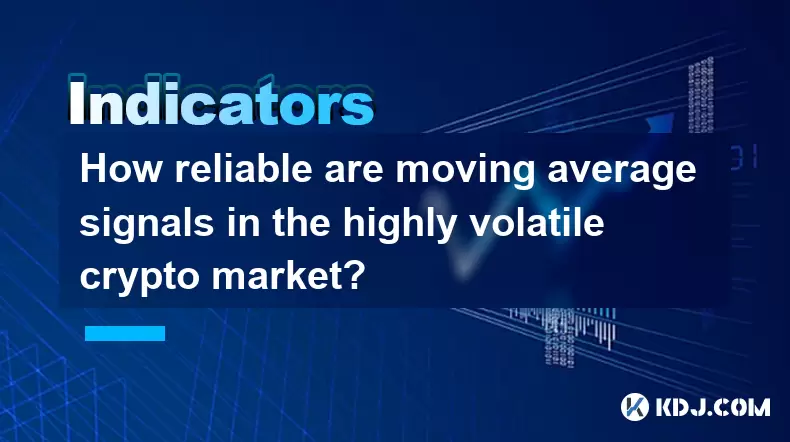
How reliable are moving average signals in the highly volatile crypto market?
Jul 31,2025 at 08:36pm
Understanding Moving Averages in Cryptocurrency TradingMoving averages (MAs) are among the most widely used technical indicators in the cryptocurrency...
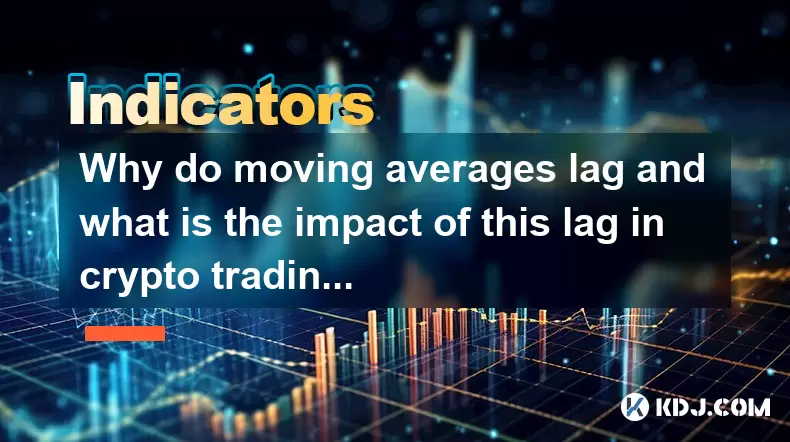
Why do moving averages lag and what is the impact of this lag in crypto trading?
Jul 31,2025 at 08:07pm
Understanding the Concept of Moving Averages in Crypto TradingMoving averages are among the most widely used technical indicators in cryptocurrency tr...
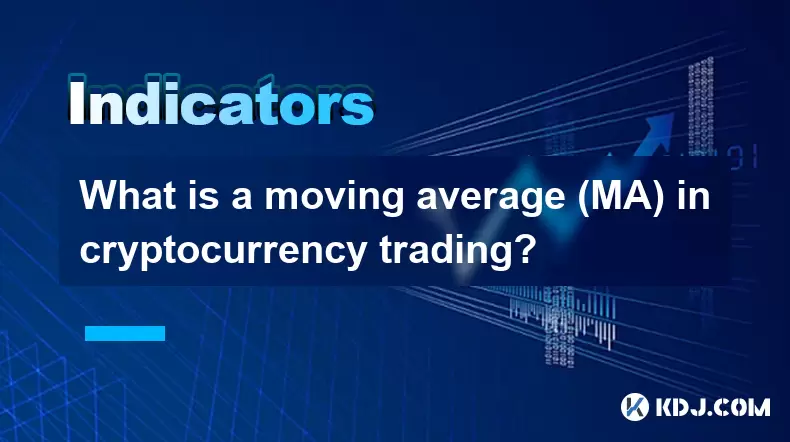
What is a moving average (MA) in cryptocurrency trading?
Jul 31,2025 at 06:30pm
Understanding the Concept of Moving Average (MA)A moving average (MA) is a widely used technical analysis tool in cryptocurrency trading that helps sm...
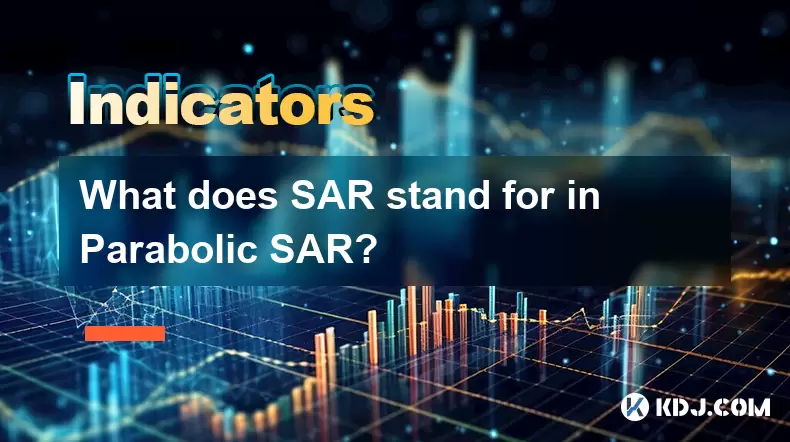
What does SAR stand for in Parabolic SAR?
Jul 31,2025 at 06:49pm
Understanding the Meaning of SAR in Parabolic SARIn the context of technical analysis in the cryptocurrency market, SAR stands for 'Stop and Reverse' ...
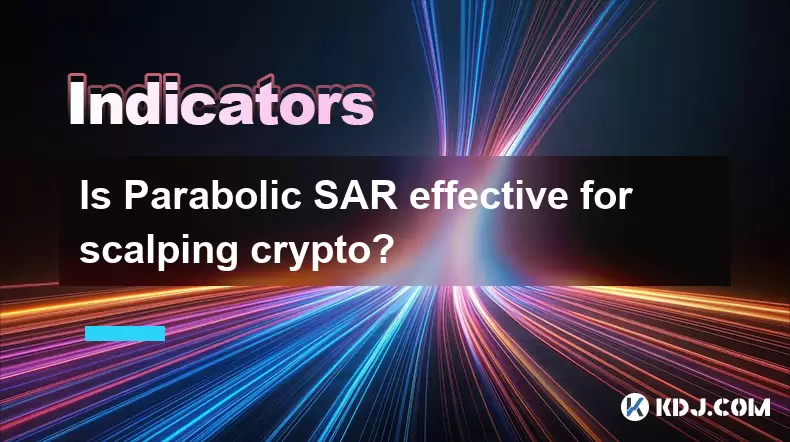
Is Parabolic SAR effective for scalping crypto?
Jul 31,2025 at 08:29pm
Understanding Parabolic SAR in Cryptocurrency TradingThe Parabolic SAR (Stop and Reverse) is a technical indicator developed by J. Welles Wilder, prim...
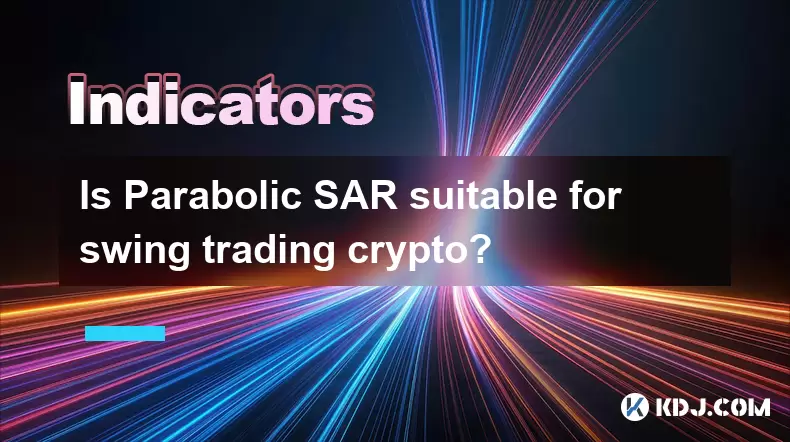
Is Parabolic SAR suitable for swing trading crypto?
Jul 31,2025 at 05:29pm
Understanding Parabolic SAR in Cryptocurrency TradingThe Parabolic SAR (Stop and Reverse) is a technical indicator developed by J. Welles Wilder that ...

How reliable are moving average signals in the highly volatile crypto market?
Jul 31,2025 at 08:36pm
Understanding Moving Averages in Cryptocurrency TradingMoving averages (MAs) are among the most widely used technical indicators in the cryptocurrency...

Why do moving averages lag and what is the impact of this lag in crypto trading?
Jul 31,2025 at 08:07pm
Understanding the Concept of Moving Averages in Crypto TradingMoving averages are among the most widely used technical indicators in cryptocurrency tr...

What is a moving average (MA) in cryptocurrency trading?
Jul 31,2025 at 06:30pm
Understanding the Concept of Moving Average (MA)A moving average (MA) is a widely used technical analysis tool in cryptocurrency trading that helps sm...

What does SAR stand for in Parabolic SAR?
Jul 31,2025 at 06:49pm
Understanding the Meaning of SAR in Parabolic SARIn the context of technical analysis in the cryptocurrency market, SAR stands for 'Stop and Reverse' ...

Is Parabolic SAR effective for scalping crypto?
Jul 31,2025 at 08:29pm
Understanding Parabolic SAR in Cryptocurrency TradingThe Parabolic SAR (Stop and Reverse) is a technical indicator developed by J. Welles Wilder, prim...

Is Parabolic SAR suitable for swing trading crypto?
Jul 31,2025 at 05:29pm
Understanding Parabolic SAR in Cryptocurrency TradingThe Parabolic SAR (Stop and Reverse) is a technical indicator developed by J. Welles Wilder that ...
See all articles

























































































